Who Are the Most Strongest and Deadliest Animals In The Sea?
The ocean, a world of wonder, holds some of the mightiest and most fearsome animals. While we often think of sharks as the rulers of the deep, there are other incredible beings that claim the title of the Deadliest Animals in the Sea.
In the realm of survival, size isn’t everything. From the colossal to the tiny but venomous, the ocean boasts a variety of creatures that can command respect.
So, who are these formidable ocean dwellers? Join us on a journey to uncover the true rulers of the sea – the deadliest animals that lurk beneath the surface.
Here are the Top Deadliest Animals in the sea in no particular order.
1. Great White Shark
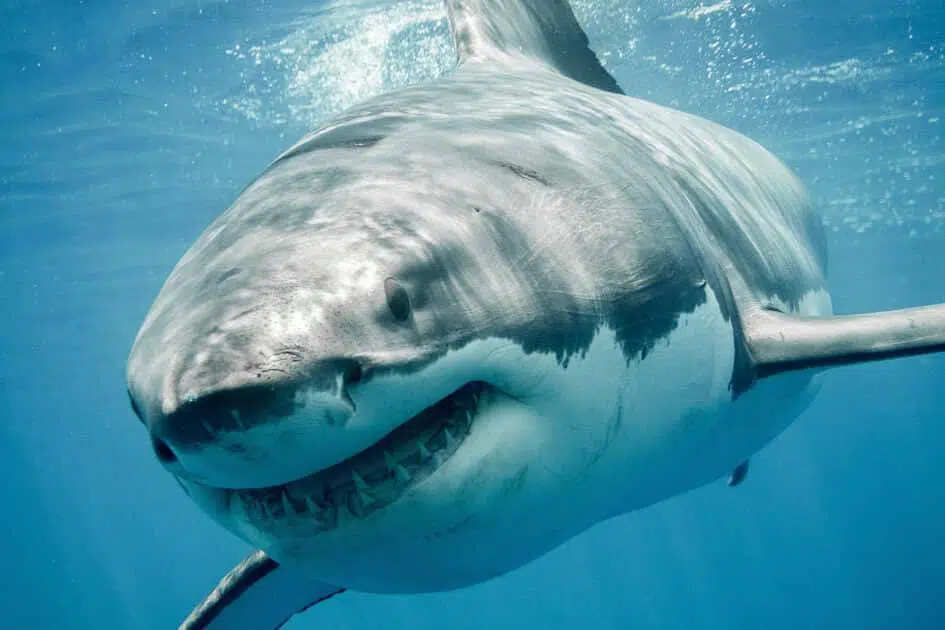
Let’s dive into the world of the great white shark, also known by many names like white shark, white pointer, and even the intense name “white death.” Did you know this incredible creature has hardly any natural predators except for the mighty killer whale?
Now, let’s talk sizes – on average, the males measure about 11 to 13 feet (around 3.4 to 4.0 meters), and the females are a bit bigger, about 15 to 16 feet (around 4.6 to 4.9 meters). But hold on, some of these sharks can grow more than 20 feet long and weigh as much as 2,000 kgs! The only other fish that outgrow the great white are the whale shark and the basking shark.
With their super muscular bodies, they’re like speedsters, chasing down some of the fastest swimmers out there. And guess what? They’ve got some of the mightiest bites in the entire ocean!
Here’s a jaw-dropping fact – their mouths are filled with up to 300 teeth! These aren’t just any teeth, though. They’re like mini saws, all sharp and triangular. They keep growing new teeth their whole lives! With such an incredible bite and their blade-like teeth, they can slice their prey clean in half.
2. Giant squid
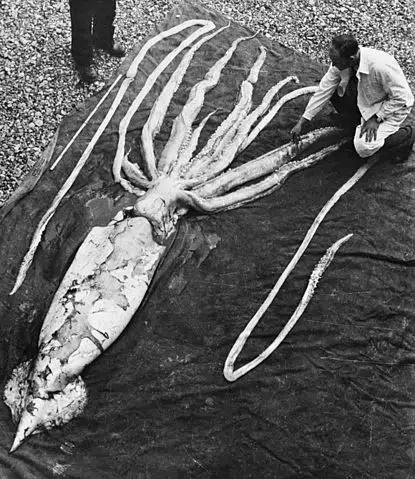
The giant squid is a species of deep-ocean-dwelling squid. It can grow to a tremendous size, estimated maximum size at around 12–13 m (39–43 ft) from the posterior fins to the tip of the two long tentacles.
The largest giant squid ever found weighed nearly 2,000 pounds and reached a jaw-dropping length of 59 feet. That’s quite the ocean giant! These incredible beings call the deep ocean home, way down where sunlight barely reaches. They dwell at depths of approximately 300 to 1,000 meters.
These humongous squids also have massive eyes, a 40cm eye of the giant squid was found in the stomach of a sperm whale. It is easily one of the biggest and deadliest animal in the sea.
3. Lionfish
 The Lionfish also called zebrafish or firefish are some of the deadliest animals in the sea, despite their stunning appearance. Their bright colors help them blend in with coral reefs, making them stealthy hunters. But what makes them truly dangerous are their venomous spines. If you get stung by one, it can cause intense pain and swelling, nausea, vomiting, and temporary paralysis.
The Lionfish also called zebrafish or firefish are some of the deadliest animals in the sea, despite their stunning appearance. Their bright colors help them blend in with coral reefs, making them stealthy hunters. But what makes them truly dangerous are their venomous spines. If you get stung by one, it can cause intense pain and swelling, nausea, vomiting, and temporary paralysis.
4. Great Barracuda
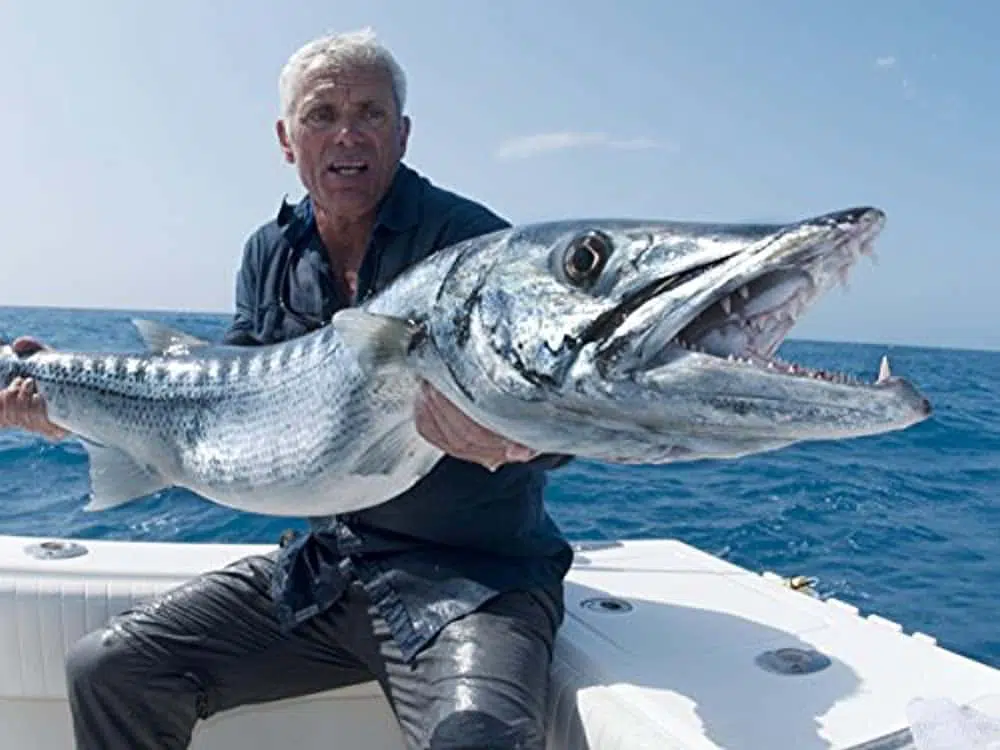
The Great Barracuda, also called the “giant barracuda” is one of the ocean’s most dangerous predators.
Great barracudas are big, the largest of the Barracudas. Normally matures are usually around 60–100 cm in length and weigh 2.5–9.0 kg. Exceptionally large specimens can exceed 5 ft and weigh over 23 kg. The record-sized specimen caught weighed more than 50 kg and measured 6.6 ft.
They are also very fast, they short bursts in speeds up to 43 km/h to overrun their prey and hunt. Great barracudas have a large mouth containing two sets of teeth. The outer row of small, razor-sharp teeth is for tearing, and the inner set of larger teeth is for piercing. They can cut larger prey in half to be devoured in pieces.
5. Tiger Shark
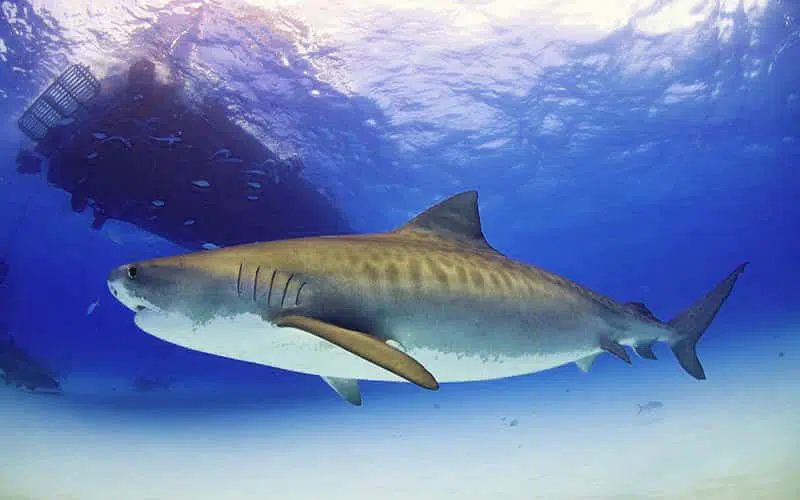
Tiger Sharks, are a species of Requiem sharks. They are one of the deadliest creatures in the sea. When it comes to humans, Tiger Sharks are second only to the Great White Shark for recorded fatal human attacks. They are also the second-largest predatory shark, after the great white.
They can grow to over 4 meters in length and normally weigh around 650 kgs. One pregnant female caught in Australia measured 5.5 meters (18 ft 1 in) long and weighed 1,524 kg.
They have sharp teeth and very powerful jaws, they can slice through flesh, bone, and other tough substances such as turtle shells.
Like most sharks, their teeth are continually replaced by rows of new teeth throughout the shark’s life. Relative to the shark’s size, tiger shark teeth are considerably shorter than the great white shark. The teeth are arguably better suited to slicing through hard-surfaced prey.
6. Killer Whale
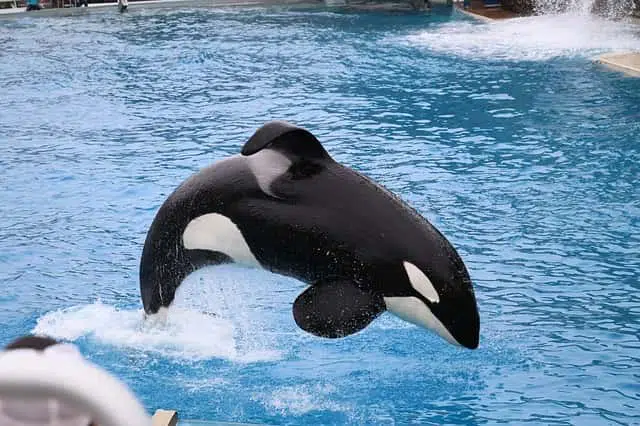
The killer whale or the Orca are the true rulers of the ocean. They are the deadliest and strongest animals in the sea. Killer whales are apex predators, which means they have no natural predators. They hunt and kill other sharks as well.
This beautiful-looking creature will prey on almost any animal they find either in the sea or even in the air over the water. Killer whales are the largest species of the oceanic dolphin family.
Males typically range from 6 to 10 meters long and weigh more than 7 to 10 tons. Orcas are extremely fast swimmers and have been recorded at speeds of up to 54 kph.
A killer whale’s large teeth are conical and interlocking. They have only one set of teeth; they are not replaced once lost. Teeth are about 4 in long and often number between 40-56 in total. An orca uses its teeth to tear it into small pieces before swallowing.
Have you thought about why are orcas called ‘killer whales’ when they are dolphins?
It’s because Dolphins and whales are closely related. Orcas were given the name ‘killer whale’ by ancient sailors. When they observed groups of orcas hunting and preying on larger whale species. They called orcas ‘whale killer’ – that was flipped around to the easier ‘killer whale’.
Despite the fact they are dangerous apex predators, they can be very friendly and playful. Orcas are highly intelligent and able to coordinate hunting tactics. They are very curious and like dolphins, they can also be trained to perform a number of tasks. Killer whales have the second-heaviest brains among marine mammals after sperm whales. In captivity, they are friendly and playful.
7. Dubois’ sea snake

The Dubois’ sea snake or reef shallows sea snake, is a species of venomous sea snake. They might not be the strongest but they are the deadliest animals in the ocean. Most sea snakes are highly venomous, especially the Dubois’ sea snake. Some are even more venomous than cobras!
This snake is found among shallow coral reef waters and sandy bottoms and is considered a “truly aquatic” sea snake. The snake venom is a potent neurotoxin, which can cause systemic symptoms such as severe fatigue, muscle weakness, respiratory failure, and total paralysis. Dubois’ sea snake is the most venomous sea snake tested, and the third most venomous snake overall.
8. Cone Snail
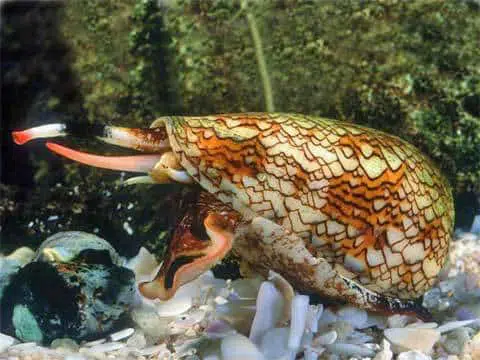
You may consider snails as slow-moving, slimy, harmless creatures but wait a minute!. The cone snail is deadly and very fast. Cone snail’s strike is one of the quickest in the animal kingdom. They only walk slow but they hunt lightning fast.
These ocean-dwelling mollusks known for their brightly colored shells attack their prey faster than almost any member of the animal kingdom. They are highly toxic. It is considered the most venomous animal in the world.
They take down fish, worms, and other snails using a hollow, harpoon-like tooth that acts like a spear and a hypodermic needle. Researchers determined that the harpoon can be propelled into prey within 100 microseconds. It launches with an acceleration equivalent to a bullet fired from a pistol.
Cone snail venom is so potent that it can immediately paralyze and eventually kill prey. The venom from one cone snail could kill many people. There is no antivenom available for cone snail stings.
9. Pufferfish
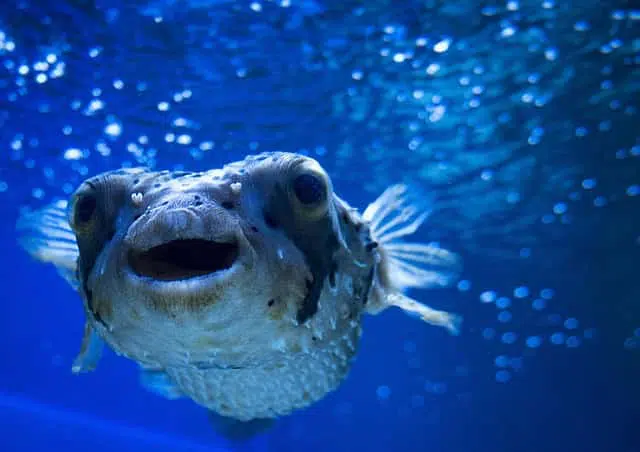
Pufferfish are among the most venomous animals in the world. Almost all varieties of this fish contain a poison called tetrodotoxin; the poison is lethal to most other fish but is particularly dangerous to human beings. Tetrodotoxin is 1,200 times more poisonous than cyanide and there is no known antidote.
All variety of these fishes is venomous. The toxin is secreted across their body, making pufferfish dangerous to touch and even more dangerous to consume.
10. Lion’s mane jellyfish
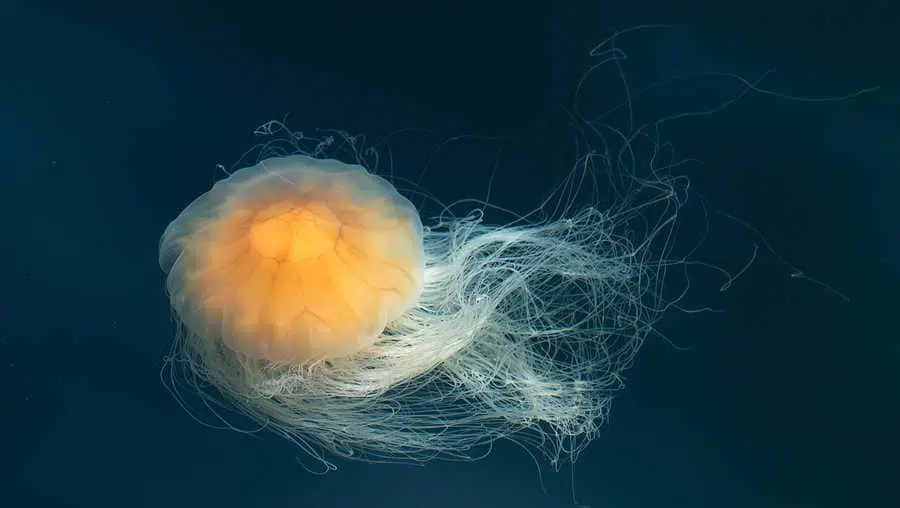
The Lion’s mane jellyfish is the largest animal mentioned in our list. This jellyfish is also known as the giant jellyfish, arctic red jellyfish, or the hair jelly. It is one of the largest known species of jellyfish.
The largest recorded specimen was measured in 1870 and had a bell with a diameter of 7 feet and tentacles around 120 ft long. This is longer than the average body of a blue whale.
They use their stinging tentacles to capture, pull in, and eat prey such as fish, zooplankton, and smaller jellyfish. Lion’s mane jellyfish do not have teeth. They use their tentacles to poison and paralyze their prey before swallowing it whole.

